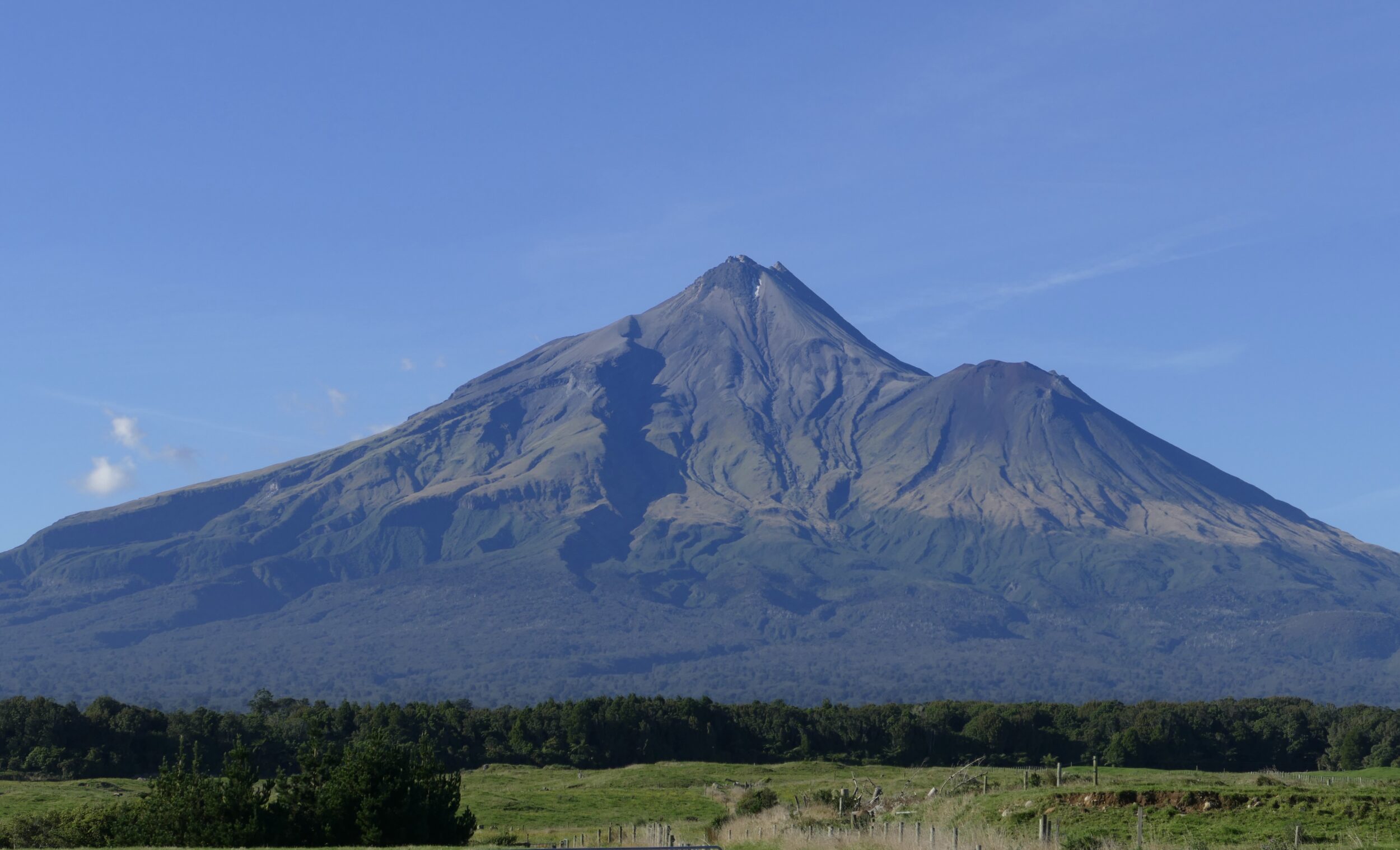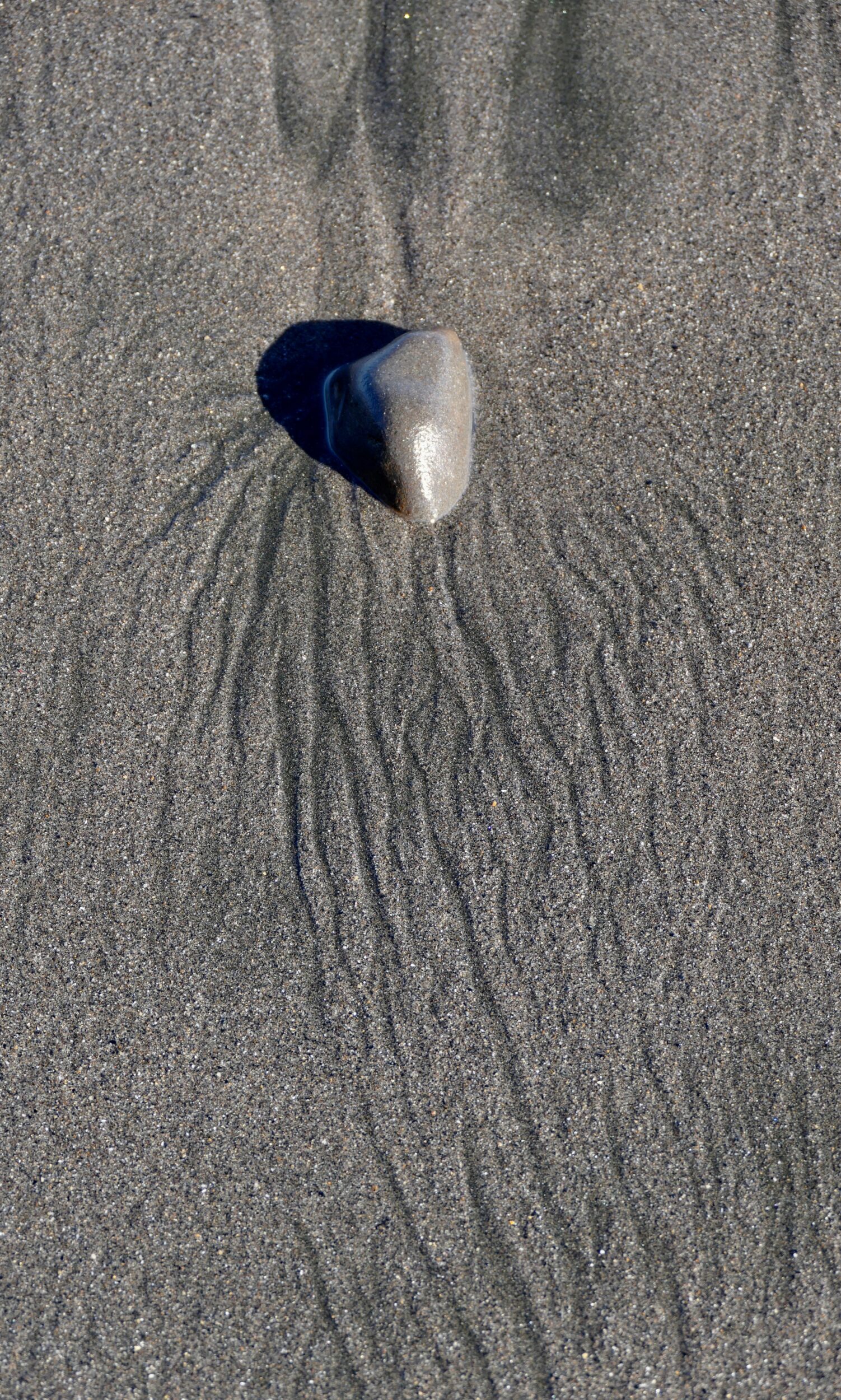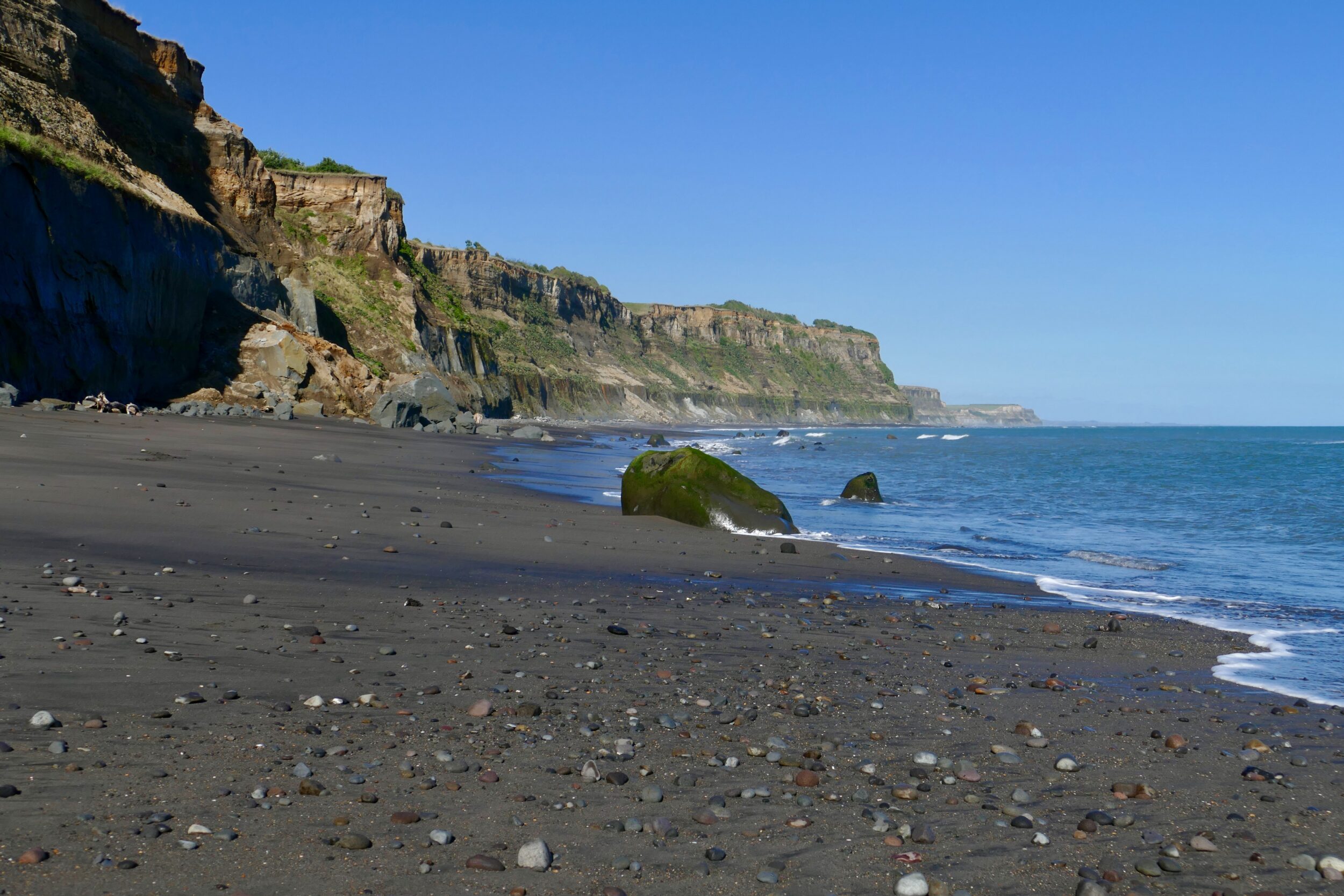The Taranaki region is named after the volcano that dominates it.
Some people still call it “Mount Egmont”.
One of the world’s most “perfect”/photogenic volcanoes, Taranaki is the primary “author” of the region’s obviously-fertile soils…and of its “black” beaches.

New Zealand’s “black sand” beaches are not quite black; then again, most “white” beaches are not quite white.

The whiteness in most (not all) “white” beaches is provided by their primary component: silica, in the form of quartz crystals.
The blackness in most (not all) “black” beaches is provided by basalt, emitted by volcanoes.
When lava contacts water, it cools rapidly and shatters into sand and fragmented debris of various size. Much of the debris is small enough to be considered sand. A large lava flow entering an ocean may produce enough basalt fragments to build a new black sand beach almost overnight. The famous “black sand” beaches of Hawaii, such as Punaluʻu Beach and Kehena Beach, were created virtually instantaneously by the violent interaction between hot lava and sea water.[2] Since a black sand beach is made by a lava flow in a one time event, they tend to be rather short lived since sands do not get replenished if currents or storms wash sand into deeper water.
The italicised paragraph is from Wikipedia’s “black sand” entry.
Not all volcano-“authored” beaches have such dramatic births and short lives; some or all of their basalt may be delivered by wind or water bearing the fruits of ongoing, gradual erosion of basalt rock/s…or, intermittently, as volcanic “ash” which falls from the sky when the relevant volcano erupts.
It is safe to assume that volcanic activity was not the only “creator” of the sand on this post’s beach.
As time goes by – in the absence of further “replenishing” eruptions – this beach will become progressively lighter in colour, as its composition becomes progressively less basalt-dominant.
Click here for a well-illustrated explanation of why different-coloured beaches are differently coloured.

Comments